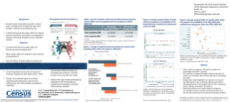
An official website of the United States government
Here’s how you know
Official websites use .gov
A .gov website belongs to an official government organization in the United States.
Secure .gov websites use HTTPS
A lock (
) or https:// means you’ve safely connected to the .gov website. Share sensitive information only on official, secure websites.
-
//
- Census.gov /
- Library /
- Census Working Papers /
- Working and poor: using the SPM to evaluate the safety net for workers
Working and poor: Using the Supplemental Poverty Measure to evaluate the public safety net for workers
Working and poor: Using the Supplemental Poverty Measure to evaluate the public safety net for workers
Introduction
The past several years have seen steady employment growth, yet earnings have not kept pace. Although workers have lower poverty rates than the national average, 8.7 percent of all workers and 5.0 percent of full-time, year-round workers were poor using the Supplemental Poverty Measure. I use the 2018 Current Population Survey Annual Social and Economic Supplement to examine supplemental poverty rates among workers and to identify the extent to which public safety net programs alleviate poverty for workers. Preliminary findings suggest that public safety net programs reduced the number and percentage of workers in poverty. Cash assistance programs brought a higher proportion of workers out of poverty than noncash benefits or refundable tax credits. Yet, multivariate models highlight the importance of noncash benefit programs such as housing subsidies and SNAP in alleviating poverty for all workers and the EITC in alleviating poverty among vulnerable FTFY workers.
Share
Related Information
WORKING PAPER
Supplemental Poverty Measure Working PapersSome content on this site is available in several different electronic formats. Some of the files may require a plug-in or additional software to view.
 Yes
Yes
 No
NoComments or suggestions?


Top

